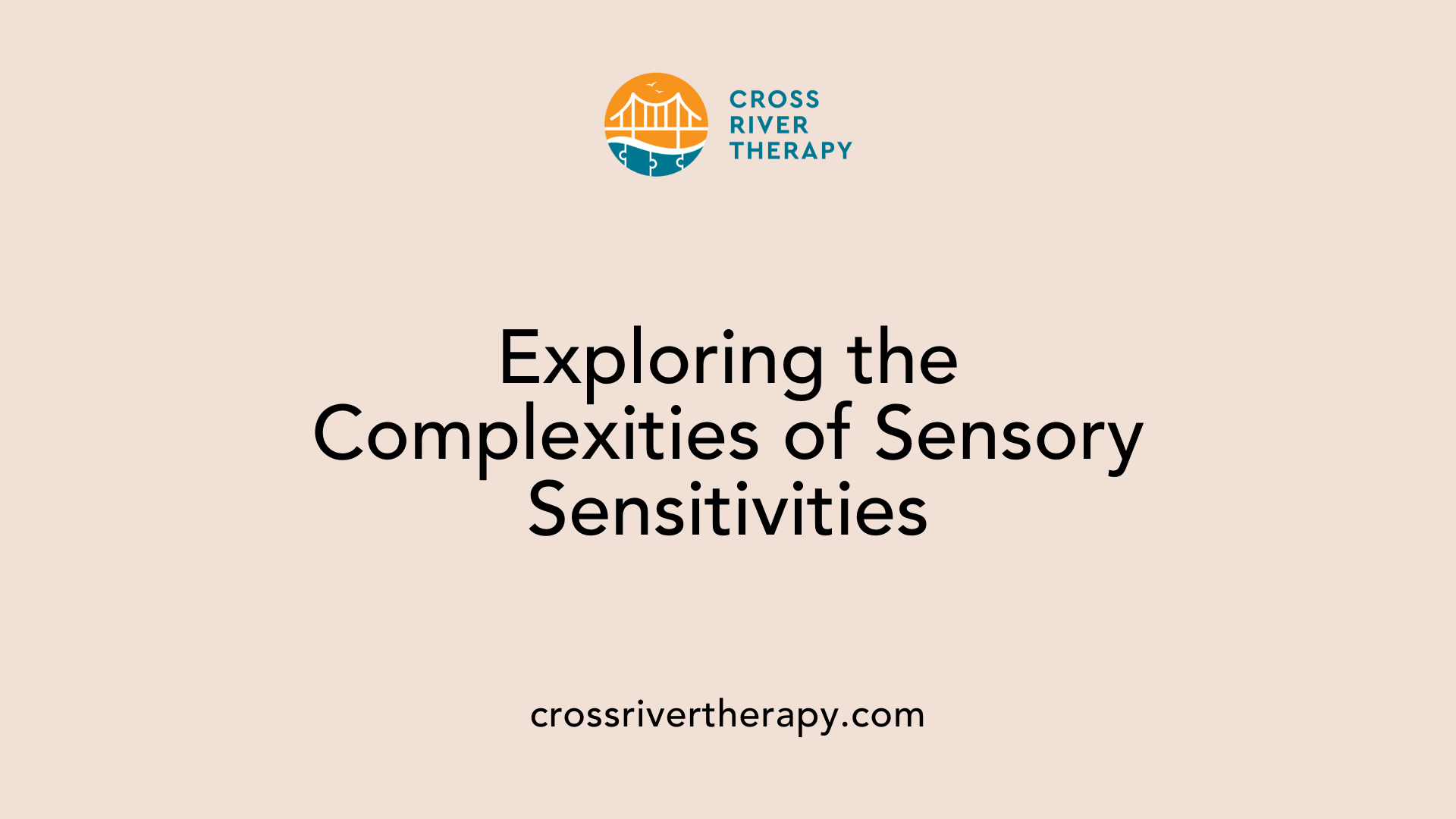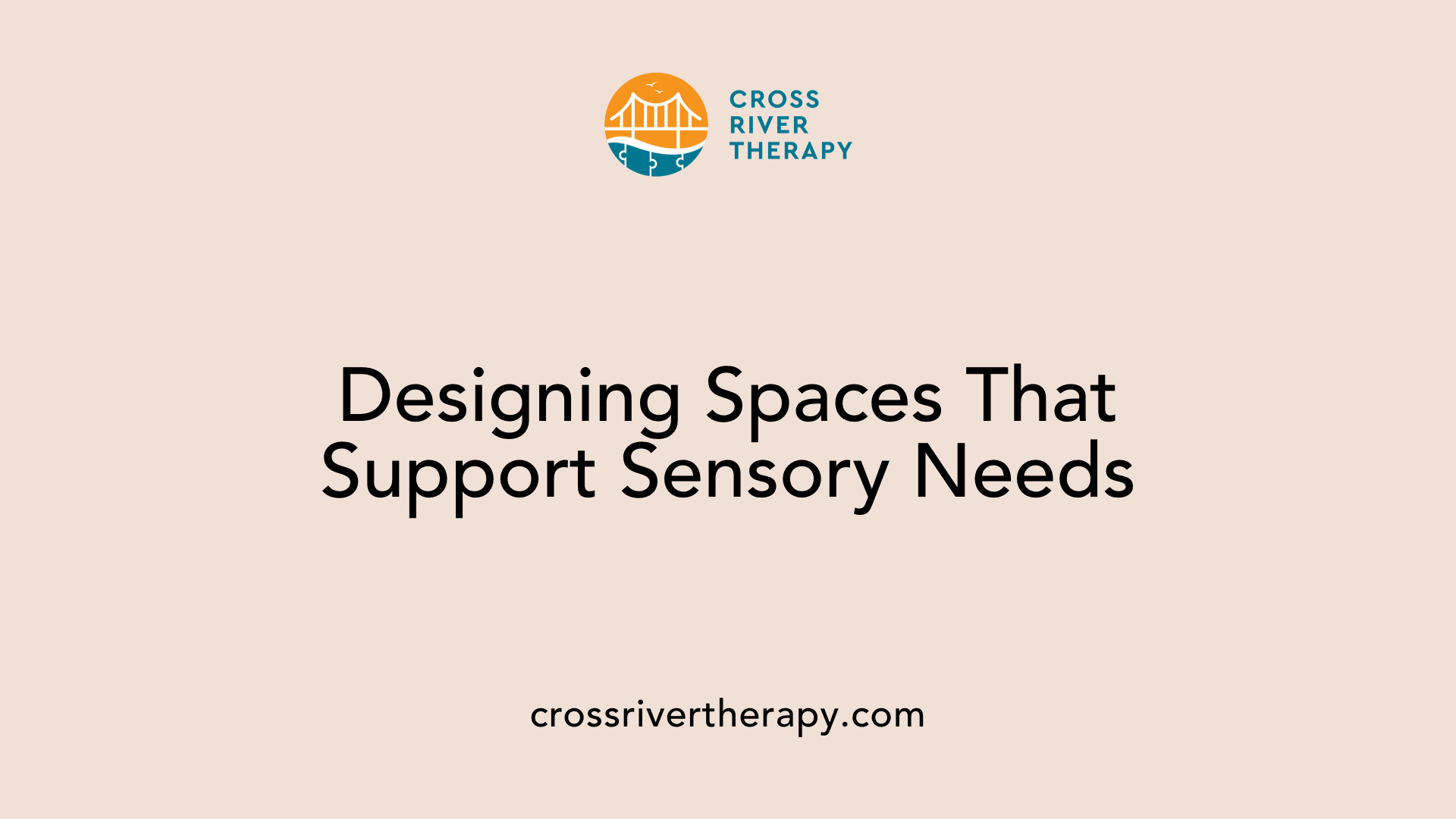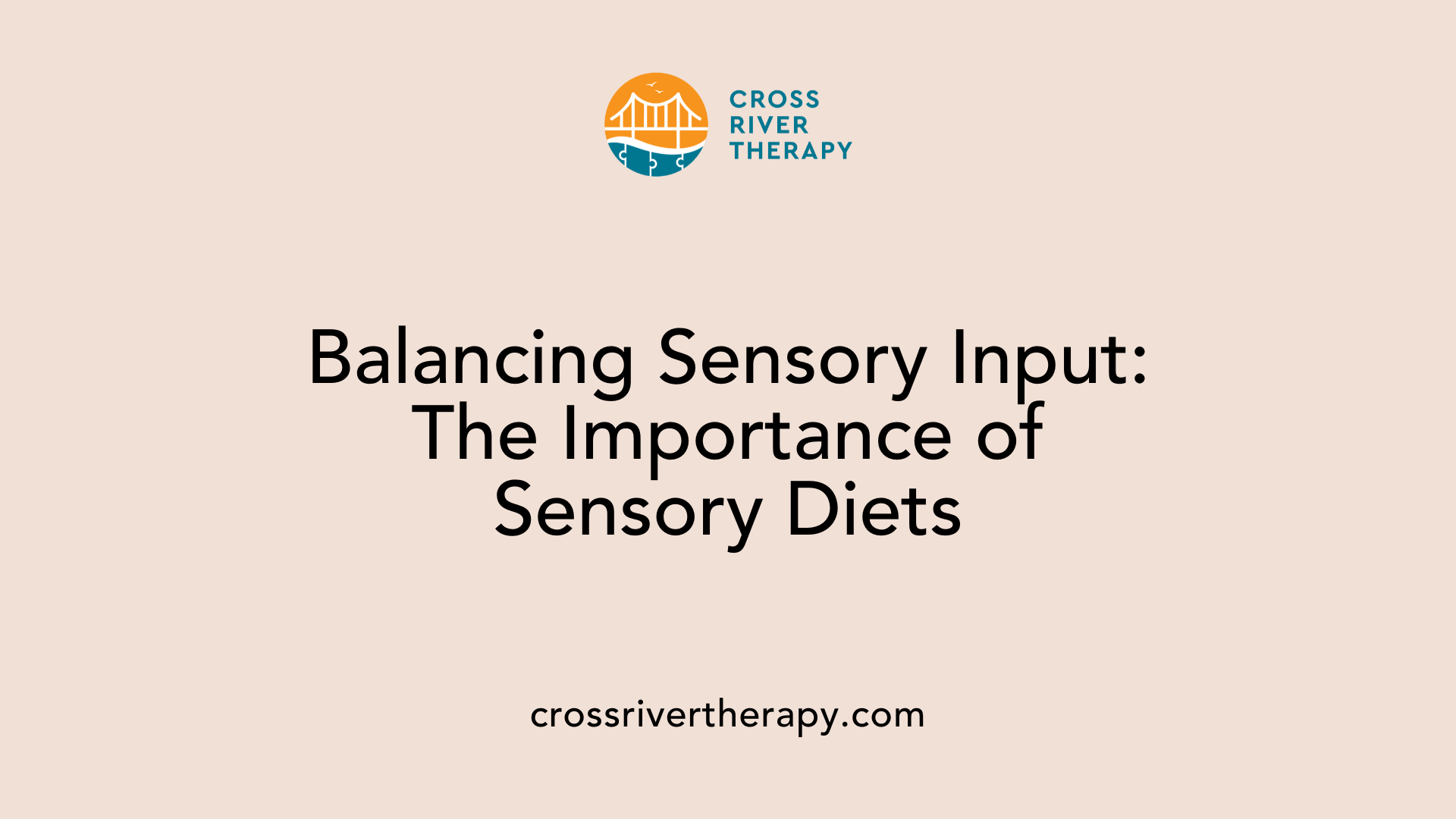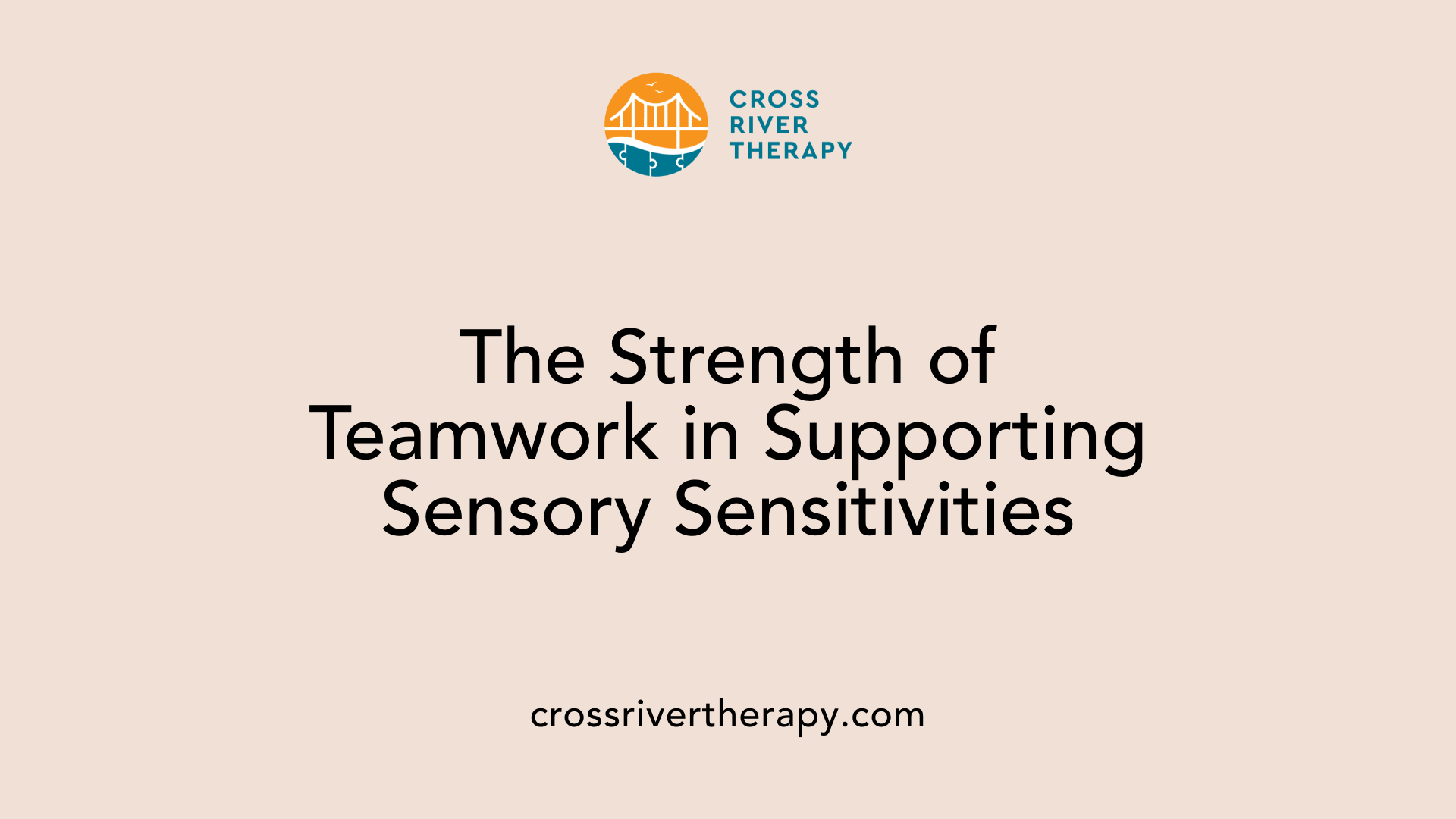How ABA Therapy Addresses Sensory Sensitivities in Children with Autism
Exploring the Role of ABA Therapy in Managing Sensory Sensitivities
Introduction to Sensory Sensitivities and ABA Therapy
Sensory sensitivities in children with autism spectrum disorder (ASD) can greatly impact their daily lives, as these sensitivities may cause children to overreact or underreact to sensory stimuli like sound, light, or texture. These sensitivities are often challenging for both the child and their family. Applied Behavior Analysis (ABA) therapy has emerged as a prominent method to address these sensory challenges by using behavior modification techniques tailored to each child’s unique needs. This article explores how ABA therapy can help children with autism manage sensory sensitivities and improve their quality of life.
Understanding Sensory Sensitivities in Autism

Definition of sensory sensitivities
Sensory sensitivities in children with autism encompass heightened or diminished responses to various stimuli through the senses. These responses can manifest as difficulties in processing sights, sounds, textures, tastes, and smells. This phenomenon can significantly impact how children engage with their environment, leading to challenges in typical daily activities.
Hyper-sensitivity and hypo-sensitivity
Children with autism may experience either hyper-sensitivity or hypo-sensitivity. Hyper-sensitivity refers to an over-responsive reaction to sensory inputs, where even ordinary sounds or lights can become overwhelming. Conversely, hypo-sensitivity indicates an under-responsive approach, where children might actively seek out sensory experiences, not registering discomfort from their surroundings. Both conditions can disrupt a child's ability to function comfortably in everyday scenarios.
Impact on daily functions
The impact of sensory sensitivities on daily life can be profound. A child with hyper-sensitivity may find it challenging to focus in noisy environments, while one with hypo-sensitivity could engage in seemingly risky behaviors to elicit sensory input. As a result, these sensitivities affect social interactions, learning processes, and overall emotional well-being, often necessitating tailored strategies like ABA therapy for effective management.
| Sensitivity Type | Description | Implications on Daily Life |
|---|---|---|
| Hyper-sensitivity | Over-responsive to sensory stimuli | Difficulty focusing, frequent meltdowns |
| Hypo-sensitivity | Under-responsive, seeks sensory input | Engaging in risky behavior, emotional disengagement |
| Daily Function Impact | Affects attention, mood, and interaction | Challenges in learning and social integration |
How ABA Therapy Works in Managing Sensory Challenges

Overview of ABA therapy
Applied Behavior Analysis (ABA) therapy is a systematic approach designed to promote positive behaviors and reduce those that are harmful, especially in children with autism. It focuses on understanding and modifying behavior through carefully planned interventions tailored to the individual child's needs. One important aspect of ABA is the use of Functional Behavior Assessments (FBAs), which helps therapists identify triggers for sensory-related behaviors. By understanding a child's unique sensory sensitivities—whether hyper-sensitivity or hypo-sensitivity—therapists can create targeted strategies that facilitate improved coping mechanisms.
Positive reinforcement and behavior change
A cornerstone of ABA therapy is the application of positive reinforcement. This method encourages desirable behaviors through rewards, helping children learn to navigate engaging sensory experiences more effectively. For instance, children are gradually exposed to challenging stimuli, such as loud sounds or bright lights, utilizing systematic desensitization techniques. By pairing these exposures with positive reinforcement, children can develop better tolerance and appropriate responses to sensory challenges, significantly enhancing their quality of life.
Role of parents in ABA
Parental involvement is essential in the success of ABA therapy. Therapists often collaborate with caregivers to ensure strategies learned during sessions are implemented consistently at home. This collaboration helps children generalize skills across different environments, reinforcing positive behaviors not only during therapy sessions but also in real-life situations. By engaging parents in the therapy process and providing them with tools, families can support their children’s progress and enhance emotional regulation, improving overall outcomes.
ABA Techniques for Sensory Sensitivities
What techniques are used in ABA therapy for managing sensory sensitivities?
In ABA therapy, various techniques are employed to help manage sensory sensitivities among children with autism. One prominent approach is the use of sensory-focused play activities. These playful interventions promote sensory exploration and help children navigate their sensory challenges in a relaxed environment. This technique encourages children to interact with different textures, sounds, and visual stimuli, allowing them to gradually build comfort and understanding of their sensory experiences.
Integrating play therapy with ABA has proven beneficial. In these sessions, therapists provide a safe space for children to express their emotions and practice problem-solving. This synergy not only makes learning more enjoyable but also reinforces desirable behaviors through active participation. By using play as a therapeutic tool, children can learn about their sensory preferences and how to handle overwhelming sensations in a constructive manner.
For many children, tactile and auditory sensitivities can be particularly challenging. ABA therapists design structured interventions that address issues like tactile defensiveness or sensitivity to loud noises. These can include gradual exposure to challenging sensory inputs paired with positive reinforcement, helping children respond more appropriately over time.
Overall, the combination of sensory-focused activities and ABA principles significantly enhances the development of coping strategies, improving the ability of children with autism to manage their sensory sensitivities effectively.
Creating Sensory-Friendly Environments

Importance of sensory-friendly spaces
Creating a sensory-friendly environment is essential for children with autism. These spaces minimize potential stressors and distractions that can overwhelm a child’s senses. A well-designed sensory environment allows for improved focus, emotional regulation, and overall well-being.
Modifying home and school environments
At home, parents can implement changes such as reducing visual clutter and controlling lighting levels to create a calm environment. For schools, classrooms can be tailored with designated quiet areas, avoiding harsh fluorescent lights, and providing comfortable seating to support diverse sensory needs.
Tools such as noise-canceling devices
Incorporating specific tools plays a key role in enhancing sensory-friendly spaces. Noise-canceling headphones can significantly reduce auditory distractions. Additionally, fidget toys and weighted blankets can provide calming input. Using these tools helps children to manage their sensory experiences effectively, fostering a more engaging and less anxiety-inducing environment.
The Role of Sensory Diets in ABA Therapy

Definition of sensory diets
A sensory diet is a customized plan that includes specific activities designed to provide the right kind of sensory input for children, especially those with autism. It aims to help them regulate their sensory systems by balancing stimulation levels—whether they need more activity to avoid hypo-sensitivity or calming experiences to counteract hyper-sensitivity. This tailored approach is a central element of ABA therapy, as it addresses individual sensory needs.
Integration into ABA strategies
In ABA therapy, sensory diets are integrated into interventions to enhance engagement and participation. They are built based on thorough assessments of a child’s sensory sensitivities and preferences. Therapists collaborate with families to implement these diets effectively at home and in educational settings. This ensures a consistent approach to managing sensory input, which is crucial for skill development and emotional regulation.
Examples of sensory diet activities
Sensory diet activities can include a variety of engaging experiences:
- Movement breaks: Activities such as jumping, swinging, or climbing that provide proprioceptive input.
- Calming techniques: Deep pressure activities like squeezing therapy balls or using weighted blankets to foster relaxation.
- Fidget tools: Incorporating fidget toys during class or therapy sessions to help maintain focus and manage sensory overload.
- Quiet zones: Establishing spaces with minimal visual and auditory distractions where children can retreat when they feel overwhelmed.
These activities aim to create a balanced sensory experience, aiding children in developing self-regulation skills and improving their overall quality of life.
Collaboration in ABA Therapy - Therapists, Parents, and Occupational Therapists

Importance of Collaboration
Collaboration is vital in Applied Behavior Analysis (ABA) therapy, especially when addressing sensory sensitivities in children with autism. By working together, ABA therapists, parents, and occupational therapists can ensure a comprehensive approach tailored to a child's unique needs. This teamwork improves the effectiveness of interventions, fostering consistent strategies between therapy sessions and at home.
Role of Occupational Therapists
Occupational therapists play a crucial role in this collaborative environment. They provide expertise in sensory integration and can recommend specific sensory tools, such as fidget toys or weighted blankets. By integrating these tools into ABA therapy plans, they help children develop better self-regulation skills and comfort with the sensory input they encounter daily.
Inclusion of Family in Therapy Strategies
Families are integral to the success of ABA therapy for children with autism. Parents’ insights about their child’s behaviors and preferences guide therapists in customizing interventions. Regular communication ensures that strategies developed during therapy are implemented at home, helping children generalize their skills in everyday situations. This inclusive approach promotes a supportive environment where children can thrive, enabling them to navigate their sensory experiences more effectively.
Empowering Children with Self-Regulation Skills
Teaching Coping Mechanisms
Teaching coping mechanisms is vital for children with autism to manage sensory overload effectively. Techniques like deep breathing exercises, visualization, and progressive muscle relaxation are often utilized. These allow children to pause, assess their feelings, and respond appropriately rather than reacting impulsively to sensory stimuli.
Self-Regulation Strategies
Self-regulation strategies in ABA therapy focus on helping children recognize their personal sensory thresholds. Children learn to advocate for themselves by communicating their needs, such as requesting a break when feeling overwhelmed. This empowerment fosters independence and better emotional control in sensory-laden environments, whether at home, school, or work.
Tools for Managing Sensory Overload
Several tools are available to help manage sensory overload. Simple yet effective resources include noise-canceling headphones, fidget toys, and weighted blankets, which can provide calming input. Additionally, creating a sensory-friendly environment by reducing visual clutter and using soft lighting can greatly help in managing sensory sensitivities.
| Strategy | Description | Benefits |
|---|---|---|
| Deep Breathing Exercises | Trains children to control their breath and calm down | Reduces anxiety and stress |
| Sensory Breaks | Regularly scheduled breaks for sensory regulation | Improves focus and engagement |
| Advocating for Breaks | Encouraging self-advocacy for sensory needs | Builds confidence in children |
By focusing on these aspects, ABA therapy aids children in developing essential self-regulation skills, allowing for improved coping with their sensory experiences.
Developing Replacement Behaviors and Self-Advocacy
Importance of Replacement Behaviors
Replacement behaviors play a crucial role in ABA therapy. They provide children with autism a constructive way to address their sensory sensitivities. Instead of responding negatively to overwhelming stimuli, children are taught safer and more socially acceptable behaviors. This could include asking for a break or using calming tools.
Teaching Self-Advocacy
Self-advocacy is another vital skill that ABA therapy focuses on. It empowers children to communicate their sensory needs effectively. Through consistent practice, kids learn to express their discomfort and request accommodations, like moving to a quieter space or using noise-canceling headphones. This fosters independence and confidence in managing sensory overload.
Reducing Sensory Overload
To minimize sensory overload, structured strategies are implemented. Techniques such as creating sensory-friendly environments and incorporating sensory breaks help in managing sensitivities. By reinforcing these practices, children become aware of their responses and learn to adapt their environments to suit their sensory needs.
| Strategy | Description | Benefits |
|---|---|---|
| Replacement Behaviors | Teaching positive behaviors to cope with sensory stimuli | Reduces negative reactions and enhances social skills |
| Self-Advocacy | Encouraging children to express their sensory needs | Increases independence and emotional awareness |
| Sensory Environment Modifications | Reducing visual noise and clutter | Creates a calmer and more focused atmosphere |
| Sensory Breaks | Scheduled breaks to engage in calming activities | Helps in regulating sensory input and reducing anxiety |
By integrating these approaches, ABA therapy helps children effectively manage their sensory challenges and navigate daily life.
Research and Evidence: The Effectiveness of ABA for Sensory Sensitivities
Evidence supporting ABA
ABA therapy has gained recognition for its structured approach in addressing sensory sensitivities in children with autism. Research indicates that it can effectively improve daily life functions by employing evidence-based strategies tailored to individual needs. Techniques such as Functional Behavior Assessments (FBAs) enable therapists to pinpoint specific triggers and create personalized interventions.
Effectiveness in real-world settings
In practical settings, ABA therapy has shown remarkable improvement in children’s ability to manage sensory challenges. For instance, children learn to better navigate environments filled with sensory stimuli by integrating coping strategies like deep breathing and taking controlled sensory breaks. This adaptability enhances their focus and reduces instances of meltdowns in both home and school settings, creating a more conducive atmosphere for learning and social interaction.
Long-term benefits of ABA
The benefits of ABA extend beyond immediate reductions in sensory challenges. Research suggests that children undergoing ABA therapy develop foundational skills that contribute to long-term emotional regulation and improved social interactions. These skills facilitate not only manageable responses in sensory-rich environments but also promote independence and self-advocacy, enduring into their adult lives.
| Area of Focus | Description | Impact |
|---|---|---|
| Evidence-based practices | Utilize defined behavior analysis techniques like FBAs and tailored planning | Enhanced individual adaptation to sensory environments |
| Real-world application | Integration of coping strategies for sensory overload in everyday scenarios | Decreased anxiety and meltdowns |
| Long-term outcomes | Development of lifelong self-regulation skills and communication abilities | Improved overall quality of life |
Comprehensive studies affirm that ABA therapy not only assists in navigating sensory issues but also nurtures vital life skills for greater success in various settings.
Educational Resources for Supporting Children with Sensory Sensitivities
How can ABA therapy address sensory sensitivities in children with autism?
ABA therapy can effectively address sensory sensitivities in children with autism by implementing structured interventions focused on behavior modification and skill development. By integrating play therapy, children explore their sensory preferences in a safe and supportive environment. This aspect is particularly beneficial for those with tactile defensiveness, allowing them to express and manage their sensory experiences.
Activities such as playing catch or using scooter boards help target specific developmental skills while ensuring the experience remains enjoyable and engaging.
Resources for parents
Parents can access various resources to support their children, including:
- Books: Titles like "The Out-of-Sync Child" offer insights into sensory processing differences.
- Online Courses: Websites provide training on implementing sensory diets and coping strategies at home.
- Support Groups: Local or virtual parent groups can offer communal support and shared strategies.
How to support children at home
Creating a sensory-friendly space at home can greatly aid children. Strategies include:
- Reducing clutter to minimize visual distractions.
- Using soft lighting to create a calming atmosphere.
- Incorporating sensory tools like weighted blankets or fidget toys.
Incorporating learned strategies into daily routines
Integrating ABA strategies into daily routines is vital for consistency and reinforcement.
- Schedule regular sensory breaks during homework or playtime.
- Use visual schedules that highlight sensory-friendly activities.
- Employ deep breathing or calming techniques when sensory overload occurs.
Working closely with your child’s therapist can also facilitate the implementation of effective approaches in everyday situations.
Conclusion: Enhancing Lives through Tailored Interventions
ABA therapy offers a comprehensive approach to managing sensory sensitivities in children with autism. Through individually tailored techniques, positive reinforcement, and the collaborative efforts of therapists, parents, and occupational therapists, ABA therapy helps children improve their sensory processing and develop essential life skills. As understanding of sensory sensitivities continues to grow, ABA remains a vital tool for empowering children on the autism spectrum, enhancing their daily lives, and enabling them to navigate various environments effectively.
References
- Understanding Sensory Sensitivities: ABA Strategies for Parents
- Can ABA Help with Sensory Issues in Autism? | Connect n Care
- Can ABA Therapy Help with Sensory Issues? - Level Ahead ABA
- Sensory Processing: A Key Aspect of ABA Therapy
- Working with Autism and Sensory Sensitivities: 3 ABA Tips!
- Sensory Issues and Autism: 10 Ways ABA Therapy Can Help!
- Applied Behavior Analysis (ABA) | Autism Speaks
- Can ABA help a teen on the mildly affected end of the autism ...
- Expert Q&A: How ABA therapy can help with severe behaviors
- Questions to ask an ABA therapist | Autism Speaks



